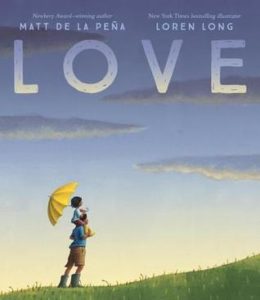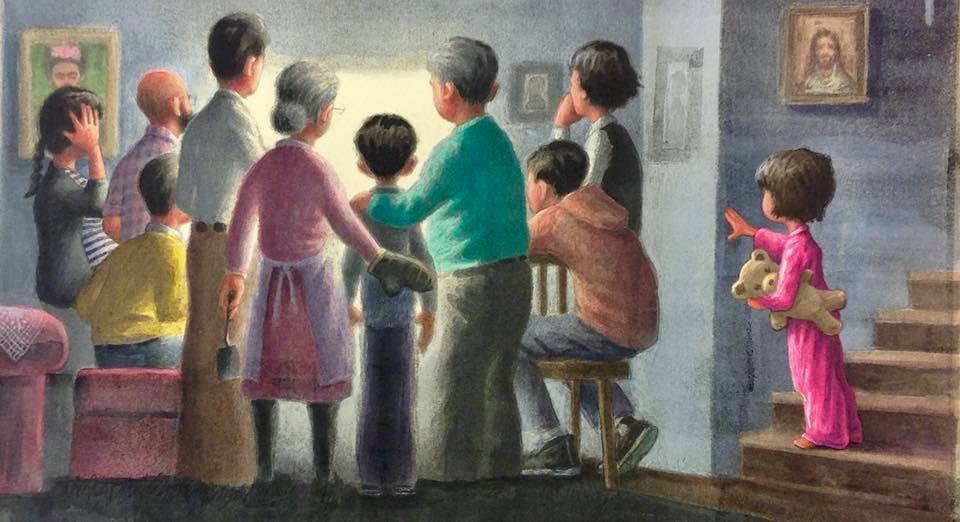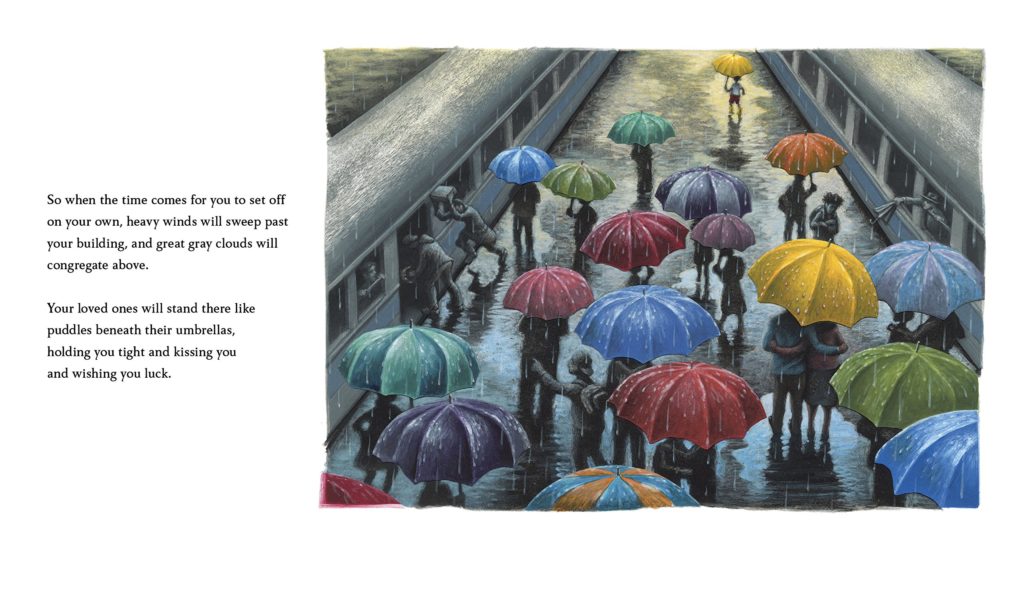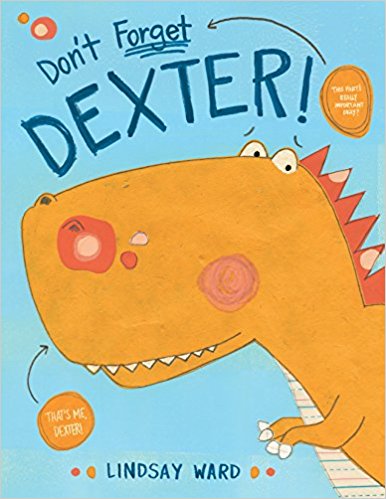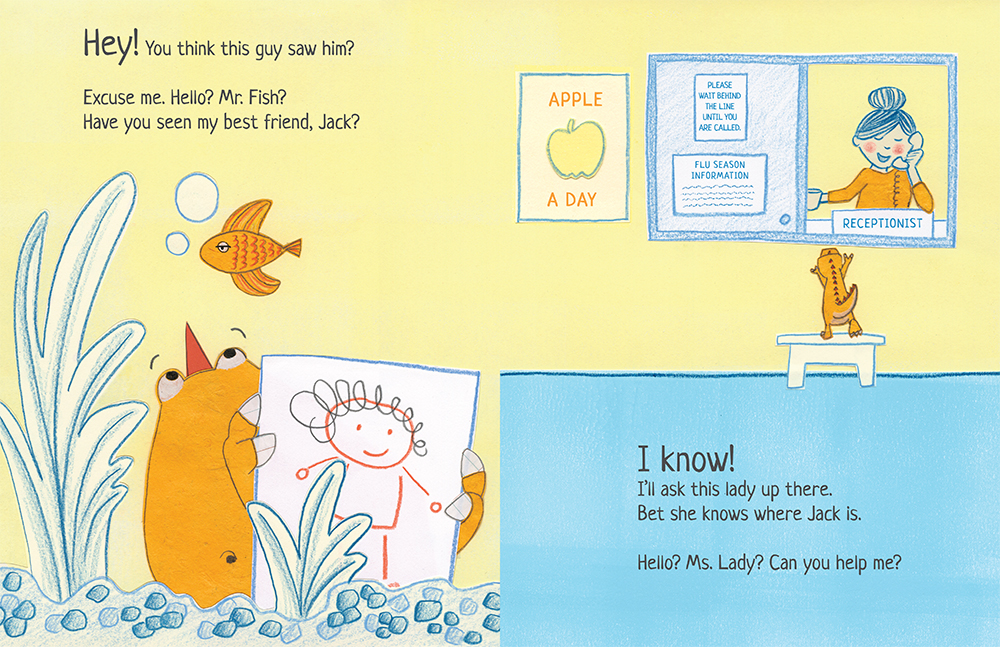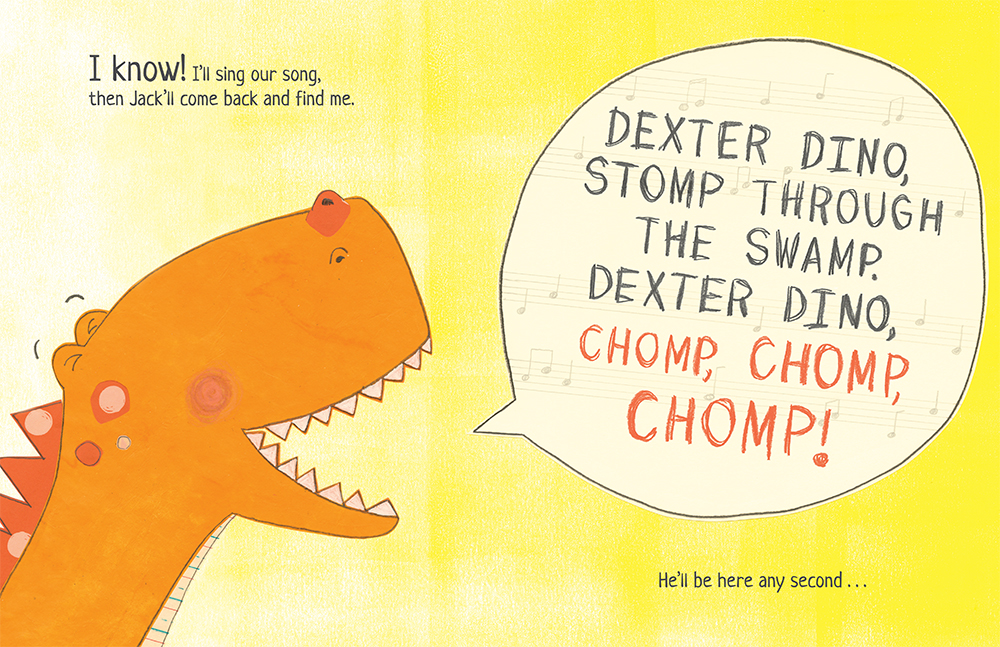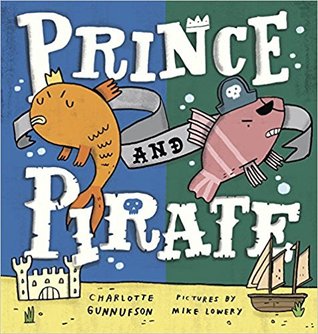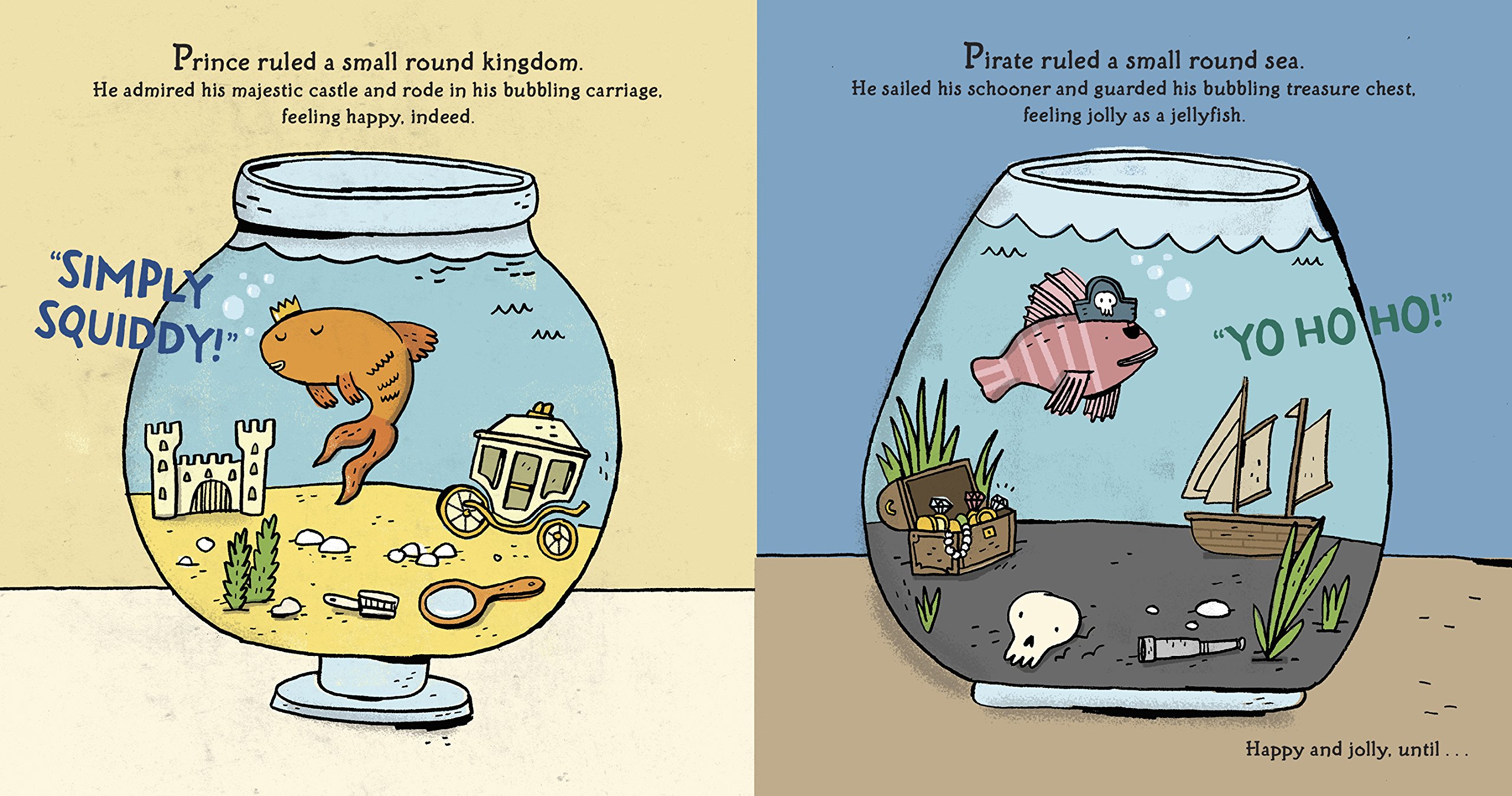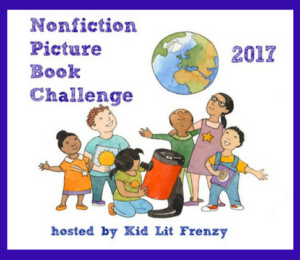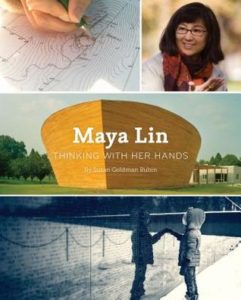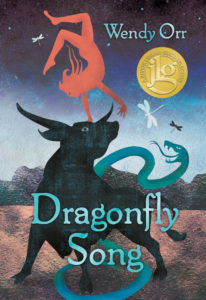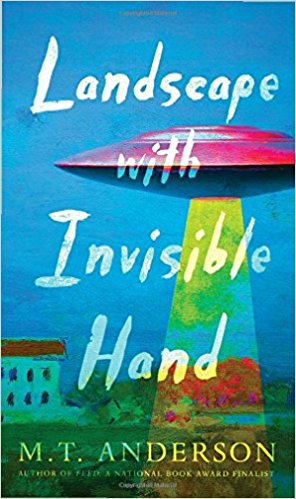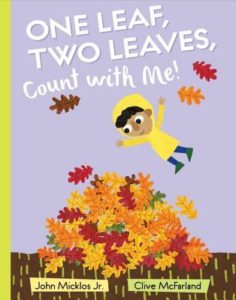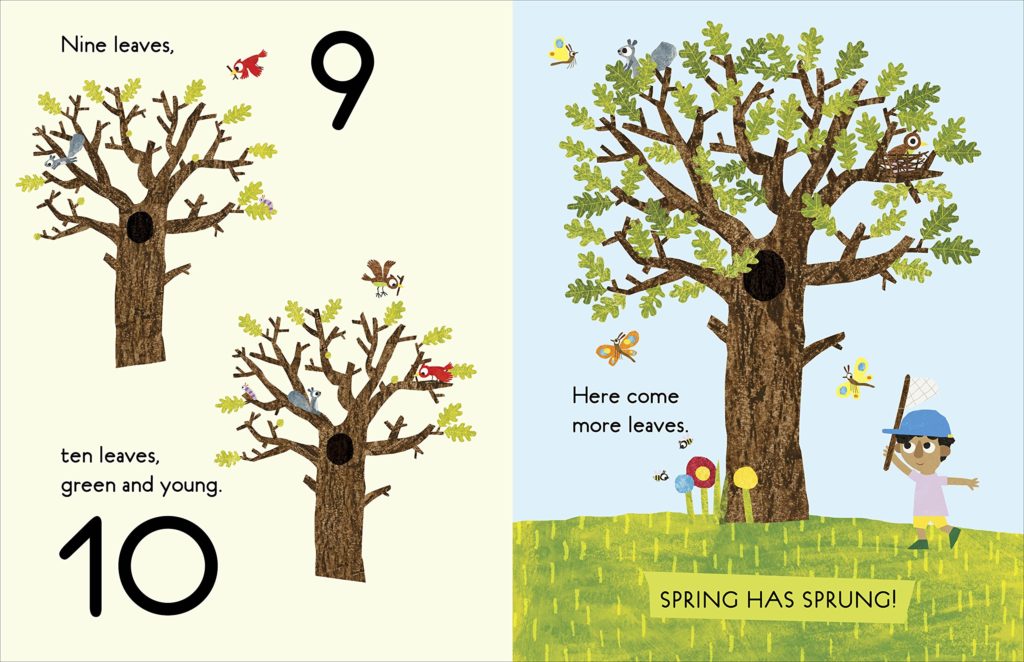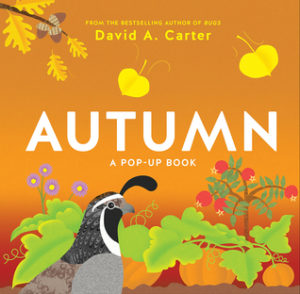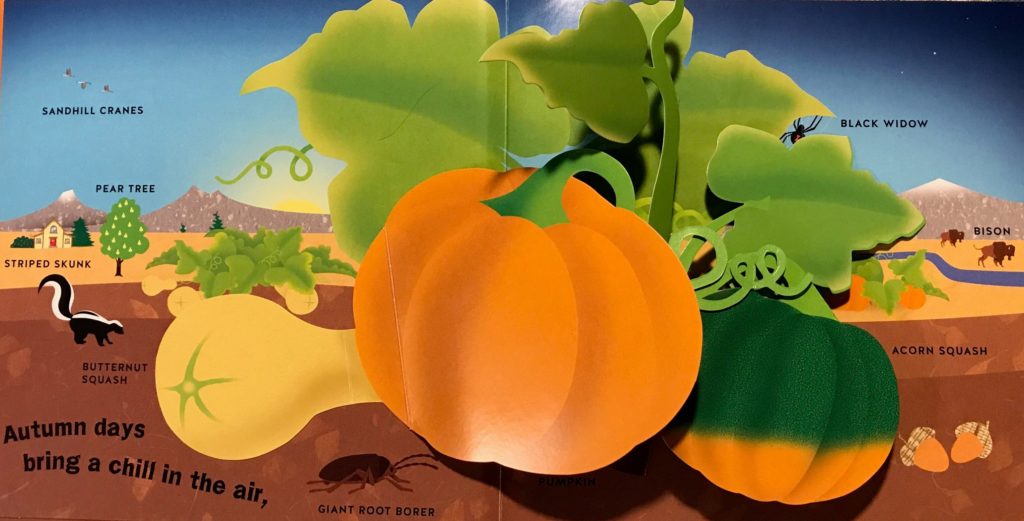Love
Author: Matt de la Peña
Illustrator: Loren Long
Published January 9th, 2018 by Putnam
Summary: From Newbery Medal-winning author Matt de la Peña and bestselling illustrator Loren Long comes a story about the strongest bond there is and the diverse and powerful ways it connects us all.
“In the beginning there is light
and two wide-eyed figures standing near the foot of your bed
and the sound of their voices is love.
…
A cab driver plays love softly on his radio
while you bounce in back with the bumps of the city
and everything smells new, and it smells like life.”
In this heartfelt celebration of love, Matt de la Peña and illustrator Loren Long depict the many ways we experience this universal bond, which carries us from the day we are born throughout the years of our childhood and beyond. With a lyrical text that’s soothing and inspiring, this tender tale is a needed comfort and a new classic that will resonate with readers of every age.
Kellee’s Review: I sat here for a long time trying to figure out how to put into words how I feel about this book. I just can’t, but I will try.
Let me give you some history. At ALAN in 2016, I believe, Matt was a speaker, and he shared how he’d written a poem about love to share with his daughter when the world didn’t seem so loving. Matt’s daughter is approximately Trent’s age and she’s his first just like Trent is, so I completely understood his feelings–the reality that we’ve brought children into this hard world. When Matt read his beautiful words, I cried. It was beautiful. At the end of the poem, he let us know it was going to be a book, and I had very high expectations.
Then at NCTE 2017, I heard that Penguin had a finished copy. I thought that there was no way that the book could live up to what I expected. But then I read it. And I cried again. I, probably rudely, found Matt right away, maybe interrupting a conversation he was having with someone else, to tell him what a beautiful book he and Loren had created. Matt’s poem had been about love, but the book is about LOVE. Love in the sense that every one needs to start thinking about–love between every person. Empathy. Understanding. Tolerance. Unity. Love for all humans.
And as I read it over and over (after I was lucky enough to receive a copy), I couldn’t think of a kid I didn’t want to share it with. I wanted to share it with my son to talk about how much I love him and how he should love all of human kind; I wanted to share it with my friend who is a 2nd grade teacher, so she could share it with all of her students; I wanted to share it with my students, so we can discuss about the love and acceptance found in each spread and each word; and I am so happy to be sharing it here with all of you so that it can be in every person’s life.
Also, please read this amazing article by Matt de la Peña: “Why We Shouldn’t Shield Children from Darkness” from Time and Kate DiCamillo’s follow-up “Why Children’s Books Should Be a Little Bit Sad” where she answers a question de la Peña posed in his article as well as this Twitter thread from Sayantani DasGupta where she explores the need for joy in the darkeness! It truly embodies my parenting and teaching philosophy: that although kids are kids, they are also humans and future adults; life should be about being real and about happiness.
In the end, I want to just thank these two amazing men for writing this phenomenal book that I so feel is needed so badly right now, and thank you for including nothing but truth within it including inclusion of all types of people and children and situations and cultures and races and ethnicities, etc.
Ricki’s Review: I am really looking forward to seeing Matt de la Peña next month during his tour! This book is absolutely stunning, and we will certainly be purchasing many copies to give as baby shower gifts. The entire text simply emanates love. It is honest, poetically, and it treats children as the intelligent people that they are. The illustrations are simply marvelous and the words dance across the page. I simply don’t have the words to share how absolutely beautiful this book is. When I think of this book, I think about a warm, cozy house and two little boys on my lap. And these little boys make me feel love, love, love.
Teachers’ Tools for Navigation: I’ll talk about one scene specifically, which happens to be my favorite.
As soon as I saw this scene, I wanted to show it to students and have discussions with them. How does this scene make them feel? Who is the family? What are they watching? What clues did they use to answer these questions?
Then I would add in the word that accompany the scene:
“One day you find your family
nervously huddled around the TV,
but when you asked what happened,
they answer with silence
and shift between you and the screen.”
And I would ask them how these words change the inferences they made about the spread.
Lastly, I would ask them why this stanza would be in a poem about love, how it fits with the theme, and what it represents.
Another idea that I brainstormed with my friend Jennie Smith are:
- Recreate my experience by sharing the poem first with the circumstances I shared above. Then reread the poem to them but with the illustrations.
- After the first read, you can also have them make their own illustrations analyzing the words then compare/contrast the choices that Loren Long made with what they did.
Discussion Questions:
- Why did the author and illustrator include tough scenes in their picture book about love?
- Which scene represents love the most for you?
- Which scene are you glad they included?
- How does the poem differ with and without the illustrations?
- What different purposes could this poem of love be perfect for?
Flagged Passages: *psst!* Matt may have told me this is (one of) his favorite spreads:
Read This If You Love: Love. (But seriously, read this. Period.)
Recommended For:
